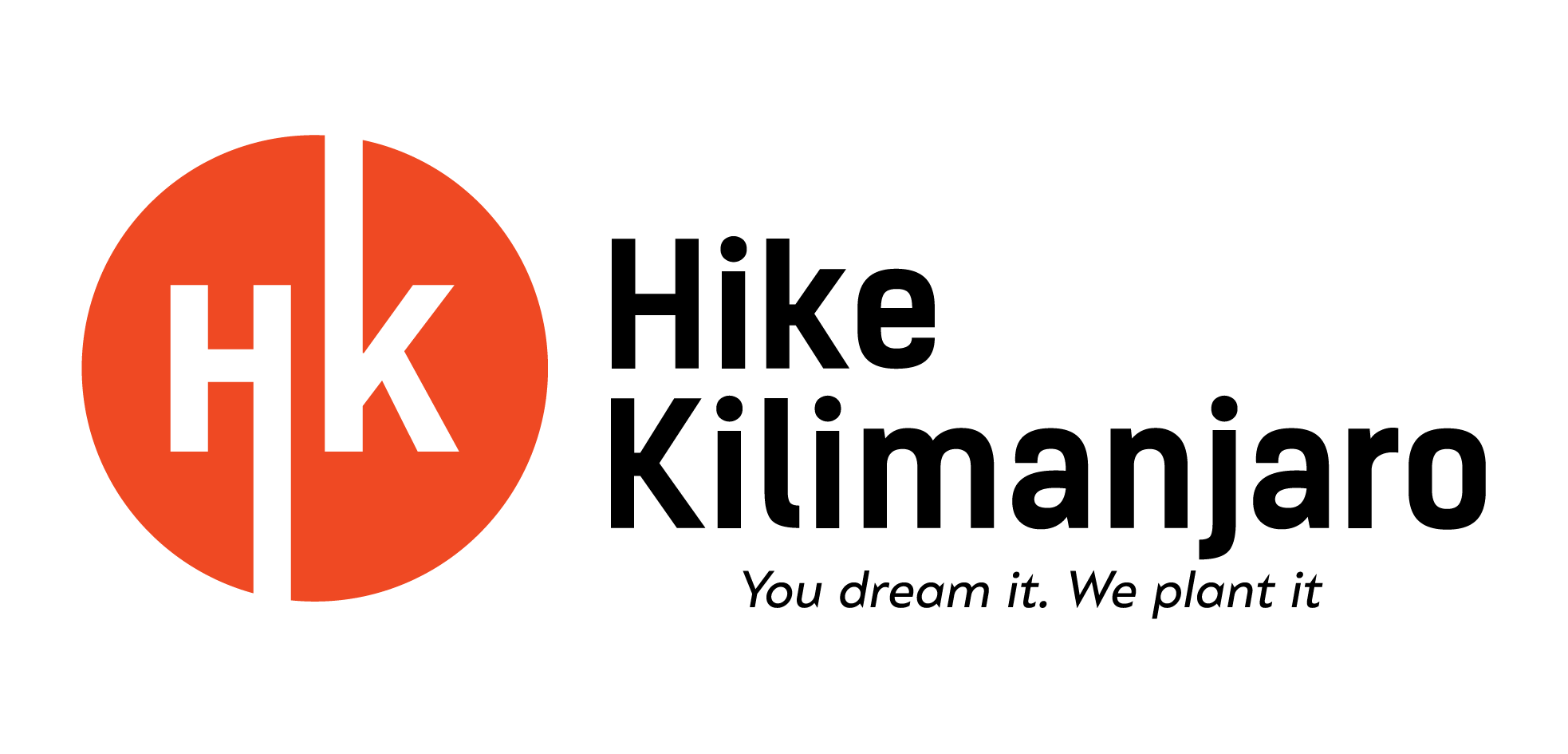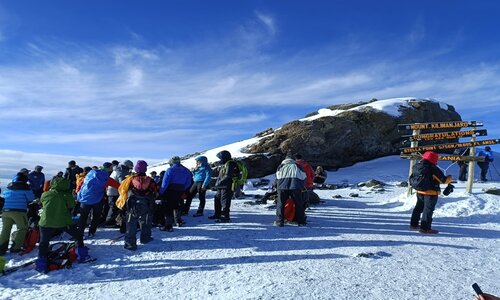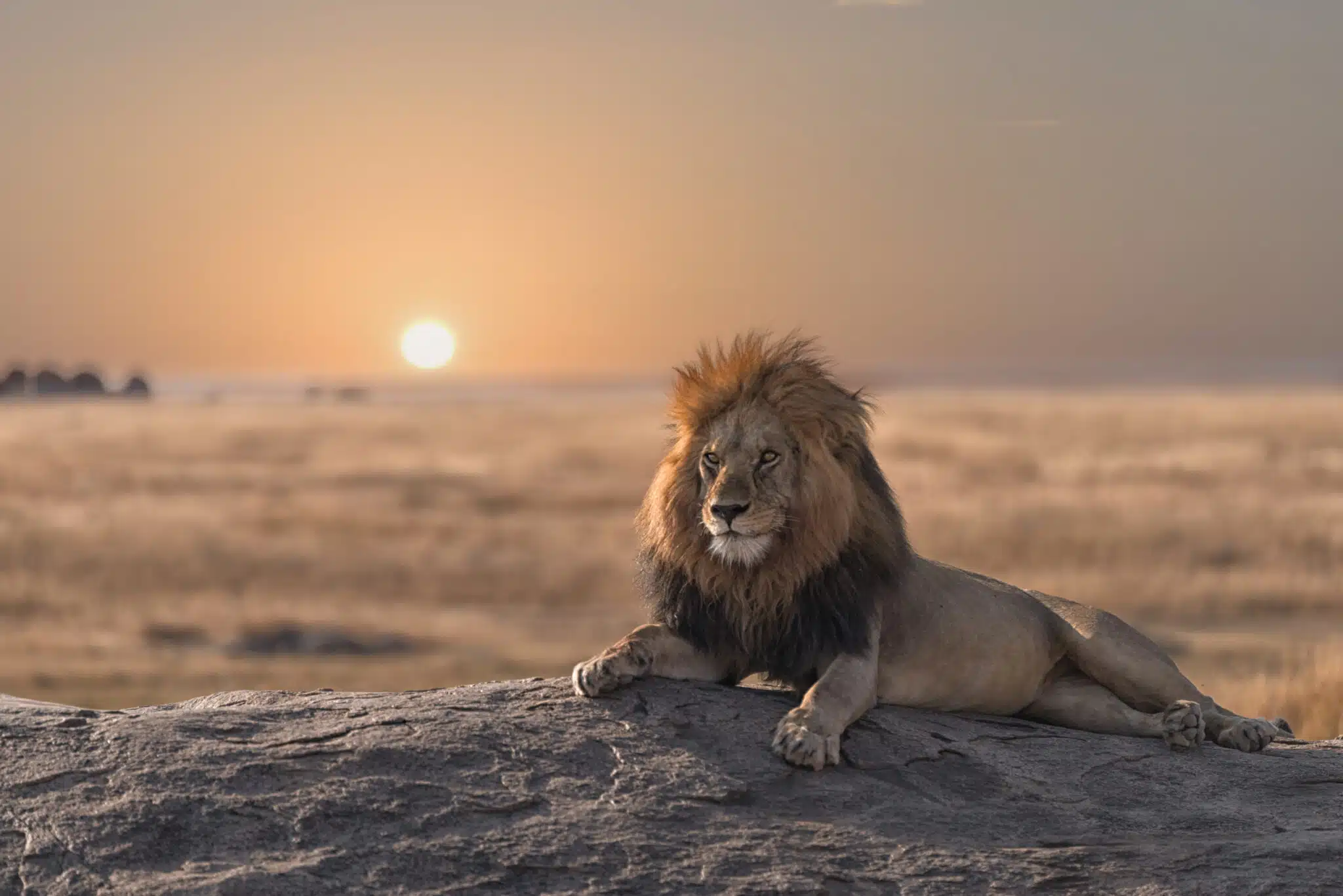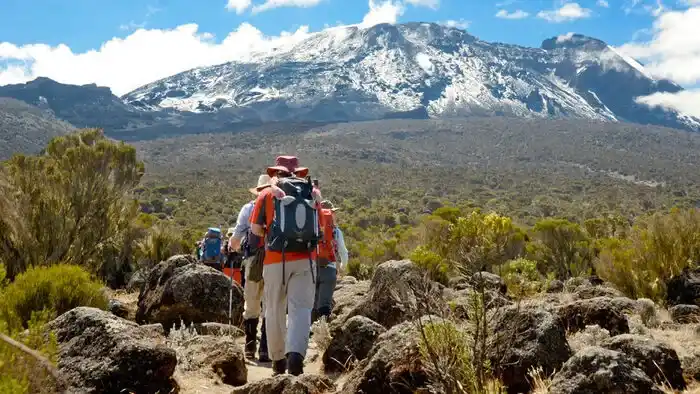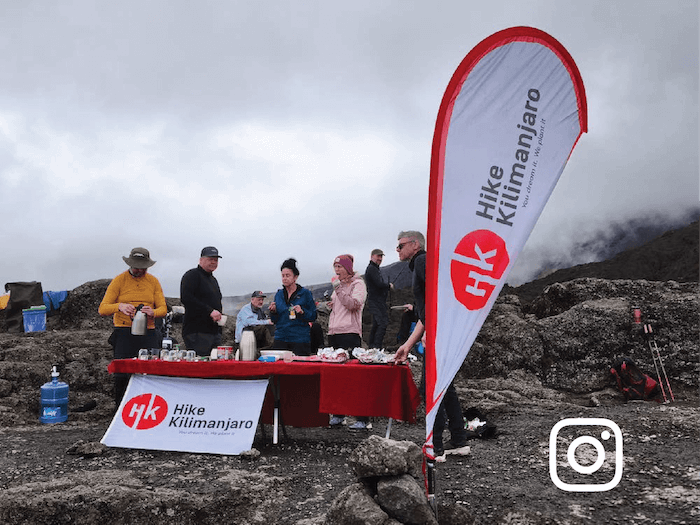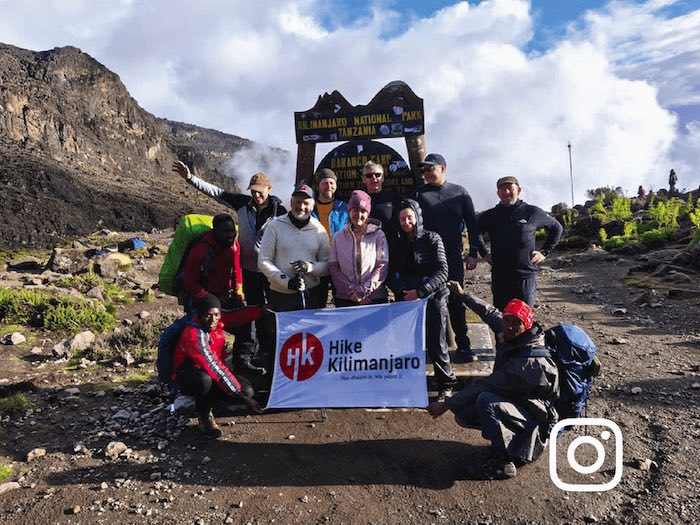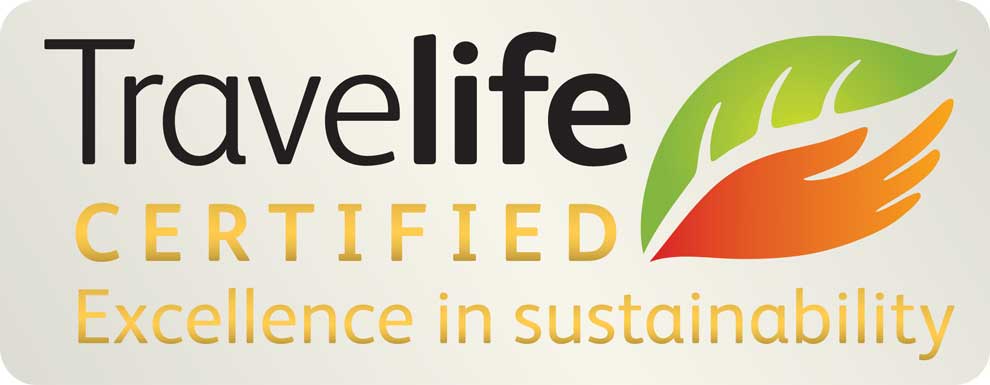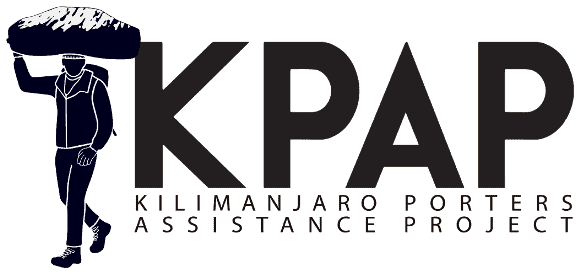Safety on Mount Kilimanjaro: What Every Trekker Needs to Know
Climbing Mount Kilimanjaro is a once-in-a-lifetime experience, but it’s also a serious high-altitude trek that demands preparation, awareness, and professional support. With the summit standing at 5,895 meters (19,341 feet), altitude-related illnesses and unpredictable mountain conditions are real risks that every climber must respect.
At Hike Kilimanjaro, your safety is our top priority. We combine expert guides, ethical logistics, proper acclimatization, and round-the-clock health monitoring to ensure you have the safest and most successful Kilimanjaro experience possible.

🧭 Is Climbing Kilimanjaro Safe?
Yes, Mount Kilimanjaro is safe to climb when the trek is organized by a certified, experienced company like Hike Kilimanjaro. However, the mountain’s elevation, cold temperatures, and demanding terrain mean that proper safety measures must be in place.
The most common risks include:
- Acute Mountain Sickness (AMS)
- Dehydration and fatigue
- Hypothermia (especially near the summit)
- Slips and falls on steep or icy terrain
- Poor acclimatization on shorter itineraries
👉 Learn more about choosing the right Kilimanjaro Route for acclimatization
🏔️ Our Safety Measures at Hike Kilimanjaro
✅ 1. Daily Health Checks
Every climber is monitored twice daily using pulse oximeters to track oxygen saturation and heart rate. Our guides use the Lake Louise Scoring System to assess symptoms of altitude sickness.
If your readings indicate serious AMS, we’ll descend you immediately and safely.
✅ 2. Emergency Oxygen & First Aid Kits
Each trek includes:
- Portable oxygen cylinders
- Comprehensive first aid kits
- Guides trained in Wilderness First Responder (WFR) or First Aid CPR
✅ 3. Qualified and Certified Guides
Our guides are:
- Licensed by Kilimanjaro National Park Authority (KINAPA)
- Trained in altitude awareness, high-altitude rescue, and first aid
- Experienced with over 100 successful summits
Each trek has a lead guide, assistant guides, and 2–3 porters per client, ensuring close supervision and support.

✅ 4. Proper Acclimatization Itineraries
Routes matter. We only recommend itineraries that include gradual elevation gain and at least 6 days on the mountain. Our most popular safe choices include:
We also encourage extra acclimatization days on routes like the Marangu and Rongai for better safety.
✅ 5. Evacuation Procedures
In case of severe illness or injury:
We conduct controlled descent evacuations on foot or stretcher
For life-threatening cases, helicopter evacuations are coordinated through AME Rescue or Kilimanjaro SAR, with coverage provided by most travel insurance plans
✅ 6. Clean Water and Nutritious Food
Dehydration worsens altitude sickness. We ensure:
- Boiled, filtered drinking water is always available
- Hot, energy-rich meals are provided 3 times a day
- Personal dietary needs are accommodated upon request
✅ 7. Private Toilet Tents
While not a “safety” item at first glance, hygiene-related illness is a real concern at altitude. We provide private toilet tents on all camping routes to maintain health and sanitation.
⚠️ Understanding Altitude Sickness on Kilimanjaro
Common symptoms:
- Headache
- Nausea or vomiting
- Dizziness
- Shortness of breath
- Fatigue
Our guides will monitor these symptoms closely and act accordingly.
Preventive tips:
- Climb slowly (pole pole!)
- Drink 3–4 liters of water per day
- Eat well and get good rest
- Avoid alcohol and smoking
- Consider using Diamox after consulting your doctor
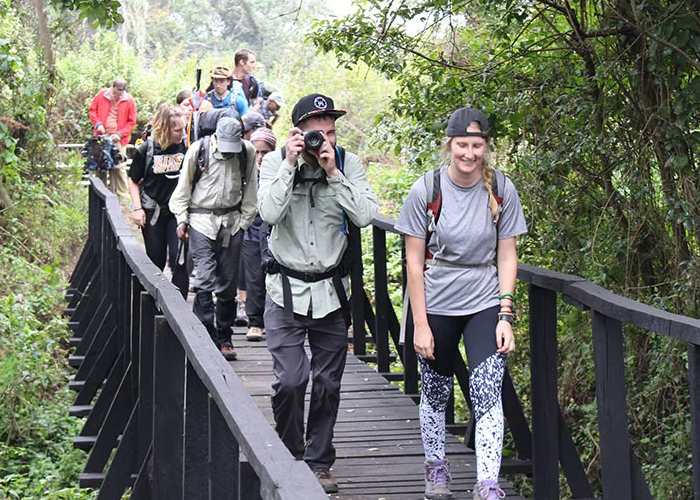
🔐 Is Travel Insurance Required?
Yes. All Hike Kilimanjaro climbers must have travel insurance that includes:
- High-altitude trekking (up to 6,000m)
- Emergency evacuation
- Trip cancellation/interruption
👉 Get our full Travel Insurance Guide
🧠 Safety Tips for Trekkers
Here’s how you can stay safe on Kilimanjaro:
- Train at least 8 weeks in advance
- Use layered clothing and quality hiking boots
- Keep your pace slow, Pole Pole
- Listen to your guide at all times
- Never hide your symptoms
🏁 Final Thoughts: Safe Climbing Starts with the Right Team
Mount Kilimanjaro is a non-technical mountain, but the risks are real at high altitude. The best way to stay safe is to climb with a company that prioritizes your well-being every step of the way.
At Hike Kilimanjaro, our goal isn’t just to help you reach the summit; it’s to help you do it safely, comfortably, and with total confidence.
👉 Browse Our Kilimanjaro Packages
👉 Join a Group Trek in 2026 or 2027
👉 Contact Us to Customize Your Safe Trek
Share Your Article:
Make your dream trip come true with Hike Kilimanjaro .

5/5
Based on 100+ reviews

4.9
Based on 60+ reviews
Customized Travel Proposal
At Hike Kilimanjaro, you can tailor your trip to your preferences. Our sample itineraries are customizable, and our specialists work with you to create your dream trip!
Related posts
These full and frank reviews are from travelers who have traveled with Hike Kilimanjaro previously. The reviews and experiences shown here are from reputable travel websites like TripAdvisor, Google, Facebook, and Trust Pilot, etc.
EXCELLENTVerified "This 3-day luxury safari combined with a Kilimanjaro hike exceeded all my expectations. "This 3-day luxury safari combined with a Kilimanjaro hike exceeded all my expectations. The accommodations were elegant and comfortable, and the guides were knowledgeable and friendly. The safari offered incredible wildlife photography opportunities, and climbing Kilimanjaro was a true test of endurance and strength, but the stunning vistas made it all worthwhile. An exceptional journey that I will cherish forever."Posted onVerified "My entire expectations were surpassed by climbing Kilimanjaro. "My entire expectations were surpassed by climbing Kilimanjaro. When one reaches Uhuru Peak, the sensation of accomplishment is indescribable. Because of the well-planned logistics, the amiable crew, and the breathtaking environment, the entire hike was easy and fun. It is a very remarkable event that I would gladly repeat. For adventurers, it's a must.Posted onVerified Tanzania truly offers a world-class experience. "My trek up Mount Kilimanjaro in Tanzania exceeded all my expectations. The stunning scenery, from lush rainforests to icy glaciers, was awe-inspiring. The local guides and porters were incredibly supportive and professional, ensuring a safe and enjoyable climb. It was challenging but incredibly rewarding. Tanzania truly offers a world-class experience for anyone looking to conquer Africa’s highest peak."Posted onVerified I feel accomplished and thankful. Kilimanjaro climbing was satisfying and difficult at the same time. Along the way, there was breathtaking natural splendour and a variety of diverse habitats. The guiding team's assistance was outstanding and got us through some really difficult times. After completing this amazing journey, I feel accomplished and thankful.Posted onVerified Thanks to their knowledgeable advice. From beginning to end, Hike Kilimanjaro offered a smooth and well-planned trip. Their staff made sure we were at ease and ready by being helpful and considerate. Thanks to their knowledgeable advice, climbing Kilimanjaro was difficult but incredibly gratifying. They are the ones I would most certainly pick again for excursions in the future.Posted onVerified "An amazing and well-planned adventure. "An amazing and well-planned adventure! The climb was fun and safe because of the team's experience and upbeat demeanour. I was encouraged by the journey and pleased to have reached the top of Africa.Posted onVerified Highly recommended this tour agency. Wonderful experience! We had a fantastic trip and enjoyed the entire team; we always felt very protected and taken care of. Highly recommended. I want to thank Keddy in particular; you were the best mentors .Posted onVerified "My Kilimanjaro trek was an extraordinary experience. "My Kilimanjaro trek was an extraordinary experience. The route was well-organized, and the staff was attentive and encouraging throughout the climb. The sense of accomplishment upon standing on the summit was overwhelming. The scenery, the challenge, and the sense of connection with nature made this hike truly special. I highly recommend it to anyone looking for a once-in-a-lifetime adventure."Posted onVerified Well Organized and Unforgettable. Hiking Kilimanjaro with a well-run tour company was an incredible experience. The crew was courteous and made sure we were fed, acclimated, and inspired at every stage. The support from porters and guides, as well as the companionship among hikers, helped to make the difficult days bearable. It was weird to be at the top above the clouds. Undoubtedly a life-long accomplishment I will always treasure.Posted onVerified Top notch safari The customer service is on point. Drivers were there to pick us up on time. We saw all the big 5 in Serengeti /Ngorongoro Crater.The accommodation booked Embalakai had great food and staff.Couldn't have asked for a better safari experience. Top notch
Speak to an Expert
Need assistance with your booking? Our friendly Tanzania-based expert team is here to help. Feel free to reach out with any travel-related questions or concerns.

Maxon

- WhatsApp +255 692 406 444
